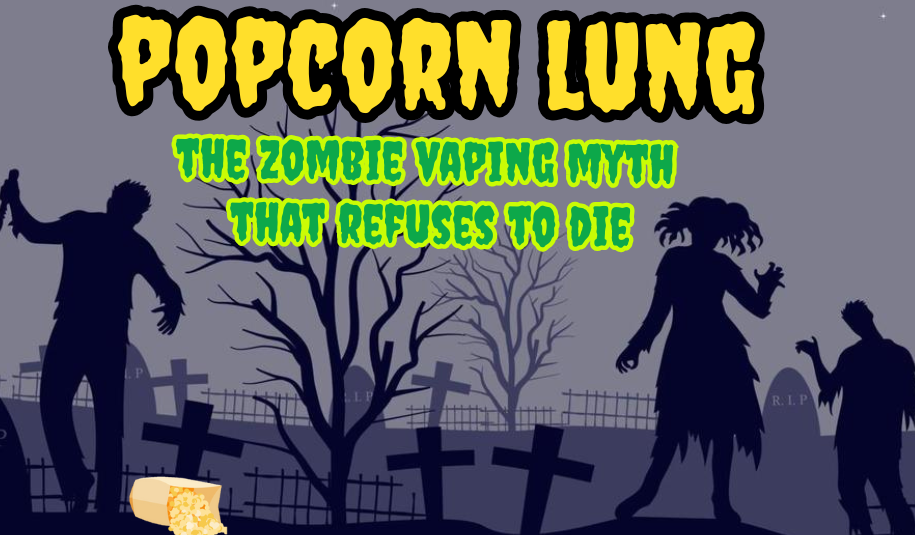It is the zombie vaping myth that refuses to die. Popcorn Lung is showing up on social media again as a scare tactic. A myth debunked over a decade ago, it is curious that it would appear now with the future of adult access hanging in the balance.
Here is a Google Trends chart covering searches for Popcorn Lung since 2004. This article will not answer who is paying to once again spread this lie, someone surely is but instead will focus on the same facts that debunked the Popcorn Lung myth back in 2015. Note that interest in this subject has not been so high since the summer of 2017 but that the actual peak was in the winter of 2015!
Keeping in mind how few adult vapers are using buttery flavors, mixing their own e-liquids, or vaping mods, it is a very strange trend indeed. What are the motivations of people spreading misinformation that was debunked a decade ago?

What is Popcorn Lung?
Popcorn lung, or bronchiolitis obliterans, is a rare condition that damages the lungs' smallest airways and can lead to coughing, wheezing, and shortness of breath. It has been linked to exposure to diacetyl, a chemical once commonly used in microwave popcorn flavoring.
While diacetyl was once present in butter flavored e-cigarette liquids, cigarette brands contain significantly more diacetyl than early vape liquids ever did.
The Truth About Popcorn Lung
- Popcorn lung is not caused by vaping.
- Diacetyl isn’t present in modern vape products.
- There’s never been a single case of popcorn lung linked to nicotine vaping.
- Combustible cigarettes contain far more diacetyl than e-liquids ever did.
- Smoking has never been directly linked to popcorn lung. Combustible cigarettes contain approximately 336 micrograms of diacetyl per cigarette.
A Lie Will Fly Halfway Around the Whole World While the Truth is Getting its Boots On
The myth that vaping causes "popcorn lung" has spread widely, sparking unnecessary panic in public health discussions.
If you've heard this claim, you're not alone. But Popcorn lung is not caused by nicotine vaping.

Why Was Vaping Blamed?
In the early 2010s, a few studies found that some poorly regulated or homemade e-liquids — especially sweet or buttery dessert flavors — contained trace levels of diacetyl. That connection sparked headlines and viral misinformation claiming that vaping could lead to popcorn lung.
The only issue is that there has not been a single case of Popcorn lung linked to vaping, in the same manner that not a single case of EVALI was caused by commercially available nicotine vapes.
Why Won't the Popcorn Lung Myth Die?
Why not ask the people spreading this information. It is impossible to unring the bell of fear. Even after it was swatted down, Popcorn Lung and EVALI live on in minds of consumers. Smoking still kills nearly half a million Americans each year — yet public health campaigns focus on sensational, outdated narratives on smoke and ash-free nicotine alternatives.
And that’s harmful. Fear-based misinformation drives smokers away from proven alternatives and keeps them hooked on combustible tobacco — which we know, beyond any doubt, causes cancer, heart disease, and early death.






Leave a comment
This site is protected by hCaptcha and the hCaptcha Privacy Policy and Terms of Service apply.